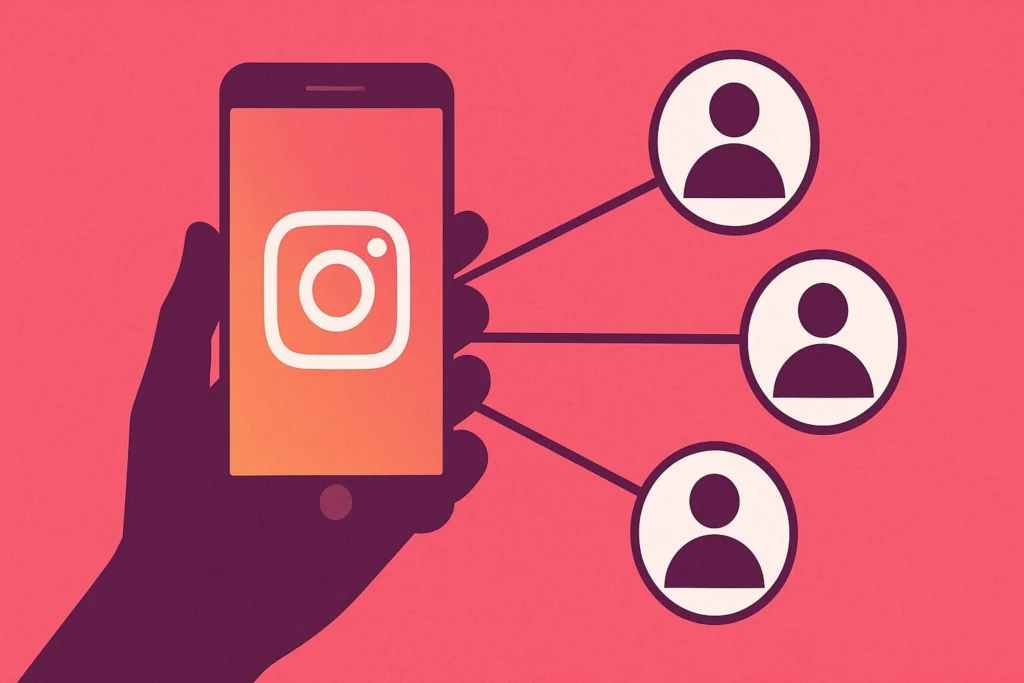Boost your social media engagement with effective hashtag use. Start by researching relevant and trending hashtags using tools like Hashtagify.me. Mix popular and niche tags to reach both broad and specific audiences. On platforms like Instagram, use up to 30 hashtags, whereas on Twitter, stick to fewer but impactful ones. Track performance metrics such as likes, shares, and impressions to see what works best. Analyze competitor strategies to refine your own approach. By strategically integrating these elements, you'll unleash more potential for your content. There's a lot more to discover and refine in your hashtag strategy ahead.
Key Takeaways
- Research industry-specific and trending hashtags to enhance content visibility and engagement.
- Limit hashtags to relevant and high-impact keywords to avoid clutter and maintain focus.
- Monitor and analyze hashtag performance using social media analytics tools for optimization.
- Use platform-specific best practices, including character limits and etiquette, for effective hashtag usage.
- Study competitors' hashtag strategies to identify successful trends and refine your approach.
Grasping the concept of hashtags is vital for mastering social media strategy and maximizing your content's reach. Hashtags, first introduced by Chris Messina on Twitter in 2007, have evolved greatly. This hashtag evolution has had a profound social media impact, transforming how users categorize and discover content.
By adding a keyword or phrase preceded by the '#' symbol, you can make your posts more visible and engage with a broader audience.
Understanding hashtag engagement is essential. Hashtags allow users to connect with like-minded individuals and group conversations around common interests or topics. This impacts user behavior, as people often follow specific hashtags to stay updated on subjects they care about.
By strategically using relevant hashtags, you can tap into these user behaviors and increase your content's discoverability.
Moreover, hashtags are indispensable for social media marketing campaigns. They can amplify your message, create a sense of community, and drive higher engagement rates. Analyzing which hashtags resonate with your target audience and regularly monitoring their performance can provide valuable insights into your social media strategy.
Utilizing hashtags effectively is essential for making your content discoverable and driving higher engagement on social media platforms. Hashtags can greatly amplify your reach, connecting your posts with a broader audience interested in similar topics. By tapping into hashtag trends, you guarantee that your content is part of relevant conversations, thereby increasing its visibility.
Hashtags aren't just about adding a pound sign before a word; they're a strategic tool. Here's why they matter:
- Increased Visibility: Hashtags make your posts searchable by those interested in specific topics. This boosts your content's chance of being discovered.
- Higher Hashtag Engagement: Posts with relevant hashtags tend to receive more likes, shares, and comments because they attract users actively following those tags.
- Targeted Audience: Using specific hashtags helps you reach a well-defined audience, enhancing the likelihood of engaging with users genuinely interested in your content.
- Trend Participation: Leveraging current hashtag trends places your content in ongoing discussions, making it timely and relevant.
Given that 15% of consumers prefer social media over search engines for information, effective hashtag use is essential. Mastering hashtag engagement can greatly increase your brand's visibility and interaction rates.
To find relevant hashtags, start by researching popular industry tags using social media listening tools like Hootsuite.
Analyze your competitors' hashtag strategies to uncover effective trends.
Leverage these insights and tools to choose hashtags that boost your content's visibility and engagement.
Research Popular Industry Tags
Regularly researching popular industry hashtags can greatly enhance your social media engagement and visibility. By staying on top of trending industry tags, you can guarantee your content reaches a broader and more relevant audience.
Here's how you can leverage this strategy effectively:
- Utilize Hashtag Tools: Use platforms like Hashtagify.me to identify trending industry tags related to your content. These tools provide insights into hashtag popularity and relevance, helping you choose tags that can boost hashtag engagement.
- Stay Current with Trends: Keep an eye on current events and trending topics within your industry. Integrating these popular hashtags into your posts can improve your visibility and align your brand with current conversations.
- Explore Niche Tags: Don't just stick to broad hashtags; explore niche industry hashtags to target a more specific audience. This approach can enhance engagement by connecting you with users who are particularly interested in your niche.
- Monitor Performance: Regularly track the performance of the hashtags you use. Analyze which tags are driving the most engagement and adjust your strategy accordingly. This ongoing optimization is key to maintaining and improving your social media presence.
Analyze Competitor Hashtag Usage
Examining your competitors' hashtag strategies provides valuable insights into which hashtags are driving engagement and relevance within your industry. By analyzing their usage, you can identify trending hashtags and themes that resonate with your target audience. Start by conducting competitor comparisons to see which hashtags they frequently use and how these impact their engagement rates. This analysis helps you pinpoint effective hashtags and avoid those that don't perform well.
Research the types of hashtags your competitors leverage, such as product/service-specific, industry-specific, or location-based tags. This diversification will enhance your own hashtag strategy, making it more robust and relevant. Pay attention to hashtag trends within your niche; staying current with these trends can position you as an active participant in popular conversations, boosting your visibility.
Utilize social media listening platforms and tools like RiteTag to track the performance of your competitors' hashtags. This data-driven approach allows you to adapt your strategy in real-time, ensuring you remain competitive.
Utilize Hashtag Tools Effectively
Building on the insights gained from competitor analysis, leverage hashtag tools like RiteTag, Hashtagify.me, and Keyhole to uncover relevant and trending hashtags that can amplify your social media reach. These tools offer valuable data on hashtag optimization, enabling you to identify trending topics that resonate with your audience.
To utilize these tools effectively, follow these steps:
- Identify Trending Topics: Use Keyhole to track trending hashtags in your niche. This will help you stay updated on what's currently popular and relevant to your audience.
- Research Hashtag Performance: With RiteTag, evaluate the performance of various hashtags. This tool gives you real-time data on the potential reach and engagement of hashtags, helping you choose the most effective ones.
- Analyze Hashtag Relevance: Hashtagify.me allows you to analyze the relevance of hashtags to your specific content. By examining the popularity and usage patterns, you can select hashtags that are both specific and impactful.
- Monitor Influencers and Competitors: Keep an eye on the hashtags used by top influencers and competitors in your industry. Their strategies often highlight effective hashtags that you mightn't have considered.
Platform-Specific Hashtag Tips
Utilizing the distinct features of each social media platform's hashtag system is essential for maximizing your content's reach and engagement. On Twitter, consider hashtag etiquette and character limits. Twitter's 280-character limit means you need to keep hashtags short and relevant, integrating them seamlessly into your tweet. Hashtags can be placed anywhere in your tweet, so use this flexibility to your advantage.
Instagram offers multiple avenues for hashtag use, including bios, captions, reels, and Stories. Here, you can use up to 30 hashtags per post, but aim for a mix of popular and niche tags to broaden your reach without appearing spammy. Instagram Insights can help you track how well your hashtags are performing.
On Facebook, hashtags are less prevalent but still useful for organizing topics. Keep them minimal and contextually relevant. You can track their performance through URLs like facebook.com/hashtag/_____, making it easy to see how specific tags are engaging your audience.
For TikTok, include relevant hashtags in your content descriptions to boost visibility. Utilize the Discover feature to find trending hashtags and integrate them into your videos to tap into current trends. Always keep your hashtags relevant and engaging to maximize impact.
Analyzing Hashtag Performance
To effectively analyze your hashtag performance, start by tracking engagement metrics like likes, shares, and comments.
Identify trending hashtags to stay relevant and optimize your content strategy.
Comparing your hashtag usage with competitors can also offer valuable insights for boosting your online presence.
Track Engagement Metrics
Analyzing the performance of your hashtags is essential for understanding their impact on your social media engagement. This process, known as engagement rate analysis and hashtag impact measurement, helps you determine which hashtags are driving interactions and which ones need tweaking. By examining the reach, impressions, clicks, and interactions generated by different hashtags, you can gauge their effectiveness.
To get started, utilize social media analytics tools to track performance. Here's a strategic approach:
- Engagement Rate Analysis: Monitor likes, comments, shares, and saves. This will help you measure how well your audience is interacting with your content.
- Click Through Tracking: Use UTM codes or other tracking parameters to see how many users click on links within posts using specific hashtags. This is significant for interaction evaluation.
- Impact Measurement: Look at metrics like reach and impressions to understand how many people are seeing your content and how often.
- Follower Growth: Track the increase in your followers to see if your hashtag strategy is attracting new audience members.
Adjust your hashtag strategy based on this data to optimize engagement and reach. By consistently analyzing these metrics, you'll refine your approach and maximize your social media impact.
Identify Trending Hashtags
When you're identifying trending hashtags, focus on those that consistently drive high engagement and align with your brand's message. Start by using social media analytics tools to track the performance and engagement metrics of different hashtags. By analyzing viral tags, you can pinpoint which ones resonate most with your audience.
Dive into the specifics—look at the reach and impressions of posts containing various hashtags. Monitor the number of clicks, likes, shares, and comments each hashtag generates. These metrics will help you gauge the effectiveness of your trending hashtag strategies and fine-tune your approach for better results.
To fully optimize your hashtags, you'll need to understand trends in usage over time. Are certain hashtags gaining traction during specific events or seasons? By identifying these patterns, you can jump on trends early and maximize reach.
Experiment with various combinations of hashtags to see which ones drive the most interaction. This trial-and-error process is essential for hashtag optimization.
Staying proactive and analytical in your approach to trending hashtags will keep your social media content relevant and engaging. By continuously analyzing hashtag performance, you'll be well-equipped to craft strategies that boost your brand's visibility and engagement.
Compare Competitor Usage
Shifting focus from identifying trending hashtags, it's time to scrutinize how competitors are leveraging hashtags to boost their social media presence. By analyzing competitor hashtag usage, you can gain valuable insights into effective strategies and trending topics within your industry.
To perform a thorough competitor comparison, consider the following steps:
- Identify Successful Hashtags: Observe which hashtags your competitors use frequently and successfully. This can help you pinpoint hashtag trends that resonate with your shared target audience.
- Monitor Engagement Levels: Track the engagement on posts where competitors use specific hashtags. Likes, comments, and shares can indicate the effectiveness of these hashtags in driving interaction.
- Integration into Content: Analyze how competitors are weaving hashtags into their content. Are they using them in captions, comments, or both? This can reveal methods for enhancing your own visibility and engagement.
- Refine Your Strategy: Use the insights gained from competitor analysis to refine your own hashtag strategy. By understanding what works for others, you can adapt and optimize your approach for better results.
Creating a Hashtag Strategy
To establish an effective hashtag strategy, you first need to define your social media goals to guarantee your efforts drive targeted outcomes. Identify what you want to achieve—whether it's increasing brand awareness, boosting hashtag engagement, or reaching a specific target audience. Clear goals will guide your hashtag optimization and make certain that your hashtags align with your overall social media strategy.
Once your objectives are set, research relevant hashtags in your industry. Look for a mix of popular, niche, and branded hashtags. Popular hashtags can give you broad exposure, while niche ones help you connect with a more specific audience. Branded hashtags, unique to your brand, can foster a sense of community and encourage user-generated content.
Next, monitor and analyze the performance of your hashtags. Use social media analytics tools to track which hashtags are driving the most engagement and adjust accordingly. This data-driven approach will help you refine your strategy over time.
Lastly, adapt your hashtag strategy based on platform-specific best practices and audience preferences. Different platforms have unique algorithms and user behaviors, so tailor your approach to maximize impact on each one. By doing so, you'll make sure your hashtags are always working hard for you.
Frequently Asked Questions
What Is the 3 Hashtag Rule?
The 3 hashtag rule suggests using a maximum of three hashtags per post. Focus on hashtag categories and niche hashtags to boost engagement. This approach prevents your content from appearing spammy and keeps your posts clean and effective.
How Do You Use Hashtags Most Effectively?
You should do thorough hashtag research and focus on niche targeting. Use a mix of branded, trending, and niche hashtags strategically in your posts. Experiment with placements and monitor engagement to refine your strategy continuously.
How Effective Are Hashtags on Social Media?
You'll find hashtags are highly effective on social media. By analyzing hashtag trends and using hashtag analytics, you can boost engagement noticeably—up to 21%. They double Twitter engagement and enhance Instagram interaction by 12.6%.
What Is the Best Hashtag Strategy?
To develop the best hashtag strategy, blend hashtag trends with niche hashtags. Analyze competitors, use trending tags to boost visibility, and always monitor performance. Tailor your approach to each platform's etiquette for maximum engagement.
Conclusion
You've now got the tools to master hashtags on social media. Understand their importance, find relevant ones, and tailor your approach to each platform.
Regularly analyze your hashtag performance to refine your strategy. By doing so, you'll boost your reach, engagement, and overall impact.
Keep testing and adapting—social media moves fast, and so should you. Ready to see your social presence soar? Immerse yourself and start hashtagging smarter today!




